PULSE
HALF YEAR REPORT
JANUARY TO JUNE 2025




HALF YEAR REPORT
JANUARY TO JUNE 2025




By Paul Phillips

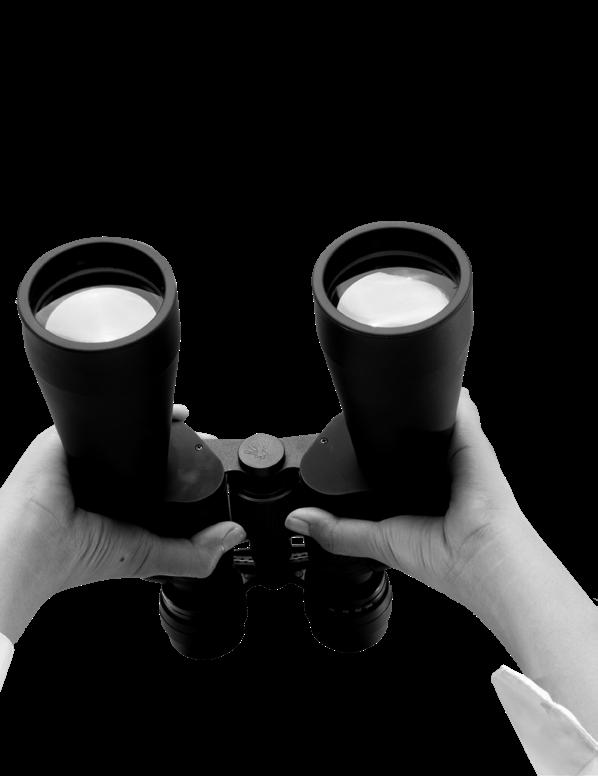
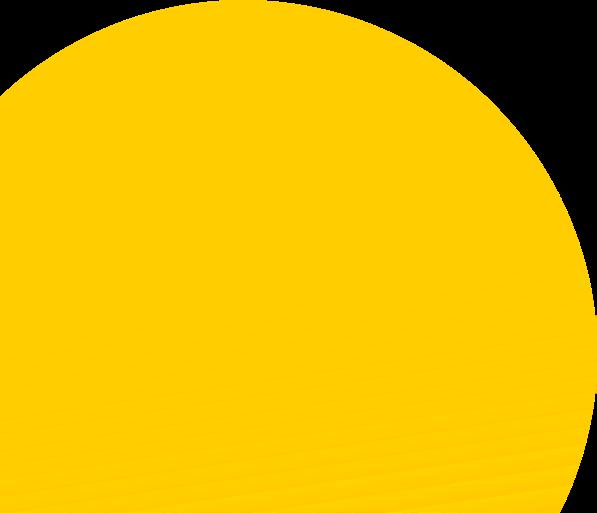


As in previous years, we’ve collated a collection of news from AAR, perspectives on some of the current challenges we see marketers and agencies trying to address and thought pieces that will provide some positive provocation, and maybe even a degree of reassurance. Hopefully, there’s something for everyone.
Summarising the sentiment across the first half of the year becomes increasingly difficult as more and more factors have a bearing on the work we all do.
‘Challenging’ is probably the best description. From macro-economic and societal challenges about which we feel close to powerless to influence as individuals and companies, through to the challenges of business, marketing and communications with which we are more familiar, but which can prove no less daunting.
There are seismic shifts facing CMOs as identified in our Evolution of the Marketing Operating Model research and no less demanding challenges facing the heritage Holdco’s, each of which is trying to reinvent themselves to maintain relevance and competitive advantage.
Nor is it any easier for the emerging and scale end of the independent sector. They just appear to do a better job with their PR.
Whatever area of the business you operate in, let’s recognise we’re all trying to deliver the best work we can for our clients and do right by our people, with a shared belief that creativity - in all its forms - is what sets us apart and will deliver competitive advantage.
The opposition is not other agencies. It’s not the traditional consultancies that have chosen to compete in our world. It’s not in-housing of services that were once the exclusive domain of agencies and it’s certainly not artificial intelligence.
If we want causes against which to rally, surely they are mediocrity, inefficiency, lack of ambition, a reduction in recognising the importance of humanity in all we do and anything that reduces the fun and enjoyment that we hope for in our working lives. We could all do with a little more fun and enjoyment!
So, six months in and six months to go. In reality, five months because December doesn’t really count.
However challenging the first half of the year has been, we wish you every success in the second half.
Enjoy the summer break whenever it comes for you.


By Paul Phillips
In January of this year, we were pleased to report an upturn in new business activity with an overall year on year increase of 15% in the volume of pitches completed.
But the statistics indicate a 28% decline in completed new business pitched across the first half of 2025 vs the same period last year. So, have the green shoots of new business recovery been eviscerated or is it simply a case of us not yet having the full story?
Although the headline figures* are disappointing, particularly if your focus in on new business, we can take encouragement from the fact that this year there are nearly three times more pitches that have yet to be completed than the same period last year.
If the upturn in 2024 is set to continue, then the new business departments of agencies and those involved in pitching are going to have a very busy second half to the year.
However, if the upturn in 2024 was just one swallow, then those agencies with an overreliance on net new business growth are in for a tough time and will have to look elsewhere to make their numbers.
Source: www.aarnewbizmoves.co.uk
PR not reported as insufficient accurate data Figures reported are volume of completed reviews only and do not include reviews still in progress



There were relatively few scale opportunities for agencies to pursue, all of which were won by different agencies.
Waitrose moved to Wonderhood and Asda to Lucky Generals (at least until they review again).
Santander and Barclays both undertook global reviews appointing Publicis Group’s Flame and VCCP respectively. Here in the UK, Nationwide turned to Mother.
Pablo continued their relationship with The Cabinet Office and HMRC for which they still had to pitch and win. Nespresso moved from long-time partner McCann to Leo (globally) and Ladbrokes appointed Atomic.
What, if anything, is to be learnt from this? That on their day, any UK agency can compete with and win against any of their competitors. This year, no one agency is dominating, at least when it comes to pitching.
There were no reported CRM/CX pitches that were completed in the first half of 2025, which is disheartening as it reflects a continued absence of stand-alone new business in CRM/CX.
How is this to be interpreted? We think there are several contributory factors. Undoubtedly CRM/CX capabilities are getting wrapped up into broader pitch opportunities in which full
funnel capabilities are being contested and the pitch is reported as integrated given the multidisciplinary scope of work.
There is an increasing cross-over of media agencies expertise into what was once the exclusive domain of CRM/CX agencies which has removed the need for brands to go to market as their media agency partners organically grow their remit.
In-house capabilities, particularly when it comes to customer, data and performance marketing have removed opportunity for the agency market. And agencies are making themselves stickier to their clients by doing a better job.
For agencies operating in this space, we think future growth from net new business opportunities will be very limited.
There were also no reported digital only creative reviews completed in the first six months of the year.
As we have previously commented, with everything being digital (or having a digital version) the need for digital only creative reviews has become less and less as, in pitches, this requirement is part of a bigger scope of work. Undoubtedly digital creative is required in pitch briefs, it just doesn't appear to be pitched as a stand-alone digital requirement.

Alongside this, brands in-house creative resource and capabilities have resulted in removing opportunities for which the market has previously competed.
Opportunities for agencies to grow their business on the back of their social skills continue to grow, albeit not at quite the same rate as previously.
This year there have been some big prizes to be won including Tesco (Uncovered), Royal Mail (Social Chain), Uber Eats (GMB Group) and Sky (Fabric).
As is the case with advertising and integrated reviews, success in pitching for social opportunities is being shared across the agency landscape.
As said previously, if you work in media you are always going to be busy, but perhaps slightly less so with new business in the first half of this year, according to the figures.
Given the raft of global super-tanker reviews in 2024 (BMW, EA, eBay, Henkel, Honor, HP, Lego, L’Oréal, Michelin, Pernod Ricard, Unilever, Volvo and more) a drop in the volume of opportunities is not surprising.
But there have still been some meaty opportunities globally - Coca-Cola (WPP Media and Publicis Media in USA), MARS and Santander (both Publicis Groupe Media) as well as attractive domestic prizes including Asda (re-won by incumbent Spark Foundry), Premier Inn (OMD), Mission Foods and Kerry Dairy (both Goodstuff) and Sony (Jellyfish).
Opportunities to pitch media are never too far away, whatever the scale or geography, so if you haven’t been as busy in media pitching as you would have liked, it’s not likely to be too long before a brand comes to market for which your agency will be a perfect fit.
The new business fortunes of any one agency can be impacted by just one hoped for success or unexpected loss; in such moments what’s happening in the wider market is of little consequence.
So, while the overall market figures make uncomfortable reading, we’d encourage everyone to be positive and optimistic for your agency’s future new business success. After all, consider the alternative!
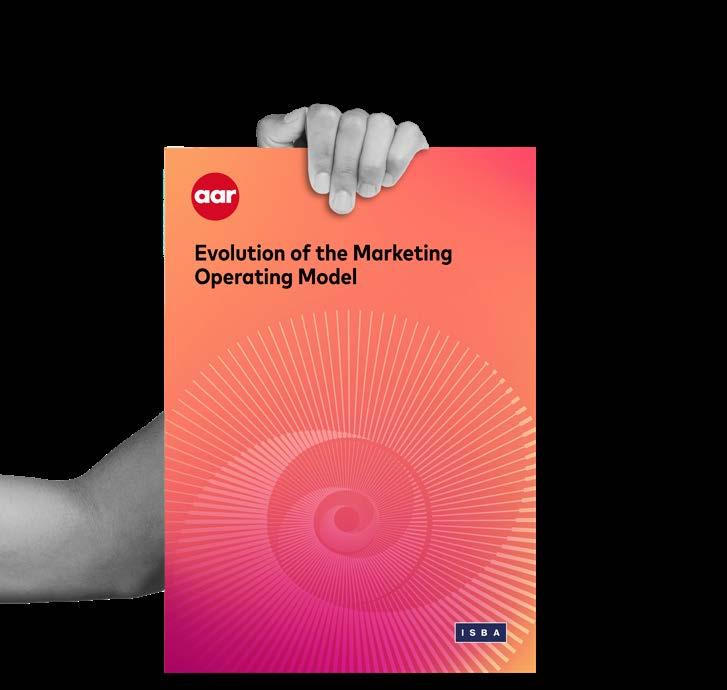
By Katrina Law
The new report from AAR and ISBA, The Evolution of the Marketing Operating Model, gives a clear signal: marketing is changing fast, and agencies need to keep up. While the report is aimed mainly at CMOs, it carries some important messages for agencies, too.
The big headline? Only 51% of CMOs feel their current marketing setup is working well. That’s a big gap between perception and ambition - and it’s not just a problem for brands. It’s also a big opportunity for agencies to step in and help close it.
For agencies, the key shift is this: brands aren’t just looking for someone to deliver work. They want partners who can help shape how that work gets done. Agencies that understand how a brand’s marketing team is structured - and how their own work fits into that - will be in a much stronger position.
This means working more closely with inhouse teams and sometimes even helping to build or improve those teams. It also means being able to work more effectively across departments - especially media and creative - which 52% of CMOs said is a major challenge right now.
There’s a lot of talk about in-housing, and the report reflects that. Around 44% of brands are bringing work in-house. But interestingly, 41% say they’re planning to stop using in-house agencies and go
back to outsourcing.
This back-and-forth shows that many brands are still figuring things out. For agencies, this is a chance to offer support - not just creative or media services, but guidance on how to structure things in a way that works. If you can be flexible and help clients experiment, you’ll become a more valuable partner.
The report also shows that 52% of CMOs are already experimenting with generative AI. This isn’t something that’s coming “someday” - it’s happening now, and agencies need to be ready.
That means building up your own AI knowledge and helping clients figure out how to use it. From writing content faster to automating tasks, no one is questioning the impact that AI has on how agencies and brands work together. It’s those agencies that lead the way that will stand out for their clients.
The research is clear: Five things agencies can do now
Learn how your clients work. Understand their internal marketing models so you can fit in and support them better.
Be flexible. Offer services that work with both in-house and outsourced setups.
Help break down silos. Work with both media and creative teams to improve the effectiveness of what both offer.
Support change. Offer help with training, processes, and team setupnot just campaigns.
Get smart about AI. Use it in your own work and show clients how to use it too.
Marketing is changing - and fast. Agencies that lead these changes, rather than fight them, will be the ones that succeed.
Download the full report here.
By Paul Phillips
Spending a week meeting with 20 agencies of all shapes and sizes provides the opportunity to look beyond the immediate demands of the email ‘to do’ list and consider the current state of the communications agency landscape.
The 2025 AdForum Global Summit in New York has just finished and I’m capturing my reflections as I wait for my flight to Chicago for some wellearned rest.
Alongside colleagues and consultants from Europe and North America we met with heritage holding companies, 21st century Holdco’s, advertising agencies (no one is just an advertising agency these days), digital media agencies, social and influencer agencies and creative studios.
Across the course of the week there were five themes that I discerned, and while I don’t claim these are representative of what’s happening across the whole communications agency landscape, I’m willing to bet they are not too far from it.
1. Homogenisation across the heritage holding companies
From a CMOs perspective I can see the challenge for the heritage Holdco’s being that they are more similar than different to each other. Of course, they each have their particular operating model with indistinguishable nomenclature, but they can end up looking like the British one, the American two, soon to be one, the Japanese one and two French options.
This does a massive disservice to the differences between the Holdco’s, but what it does mean is that the significance of the leadership, culture, people and creativity is even more important and is what can make the difference.
2. LLMs, AI, Technology and Data
It was not until our penultimate meeting of the week with Orchard that we sat through a presentation that didn’t mention LLMs, artificial intelligence, technology or data, for which they were to be applauded.
But as we all know this is the current and undoubtedly long-term investment arms race and battleground for agencies with deep pockets
(or their PE backers, with even deeper pockets).
All the companies with which we met gave compelling arguments and evidence for the superiority of their market offering, with some claiming real competitive advantage.
Now there are others much smarter than me who can unpick the differences and even challenge some of the claims made, but I suspect, once the credibility threshold has been passed for marketers, they will pay their money and make their choice.

3. Compensation is moving towards an output-based approach
All types of agencies offering very different services from the palette of marketing communications are trying to move to an outputbased remuneration construct as standard and away from hours-based payment.
We should be asking ourselves why it has taken so long, but the good news is that there is real momentum in this approach which is to be welcomed by brands as much as it is by agencies.
The next challenge is for outcome-based remuneration to become more prevalent and not the sole domain of performance-based marketing. It will take some time, but it is coming.
4. Networks vs Independents is a redundant comparison
I’ve always been surprised by the inability of networked agencies to argue the benefits of their scale, resources, investment, bench strength and more, in the way that independent agencies have been able to argue the benefits of their independence with much greater ease.
Of course, it has been perhaps easier for the independents that have used networks as the enemy in a way that can’t be reciprocated by those networks.
But arguments like we care more or it means more to us that I will often hear from independent agencies are patently not true. The many talented people that work for network
agencies don’t care any less, they are not indifferent to the quality of thinking, work and service they deliver to their clients. Of course they aren’t.
Each network or holding company will have their challenges, some more vigorously reported than others, but I believe this axis of comparison is now redundant as technology and ways of working have evolved to the point where agency location and size should not be used as discriminatory factors when considering agency partners.
Global campaigns can be delivered by small (in headcount) agencies; Orchard based out of New York or Forsman & Bodenfors out of Gothenburg are two such examples. Just as scale agencies can offer a range of services to financially challenged brands that their budgets would have formerly suggested such agencies would be out of reach to these clients; the greatest proportion of any of the major media agencies is mid-sized clients.
We encourage the marketers with which we work to look beyond the superficial network vs independent comparisons to those that offer a more meaningful insight into an agency across hard measures such as technology, data, analytics and operational capabilities, and what are often described as softer measures such as leadership, culture talent and creativity; my fifth observation below.
5. The best measure of an agency is leadership, culture talent and creativity
As I have indicated in some of my observations above, the differences between agencies, networks and holding companies are becoming more difficult to identify, particularly for CMOs, their teams and procurement colleagues who are not close to the agency marketplace.
A week spent meeting with all kinds of agencies reinforced my long-held belief that the meaningful differences between agencies are their leadership, culture, people and creativity.
It starts with strong and stable agency leadership; the most successful agencies will point to this as the foundation of the agency’s success. Look to VCCP or Leo Burnett in the UK or Anomaly and Bulletproof globally as examples.
From this leadership comes an agency’s culture, which is a vital ingredient in how an agency performs and the talent it attracts. As Chris Hirst has eulogised, culture is a hard and differentiating asset that the most successful agencies cultivate and protect.
Some things haven’t changed in our industry, one of them being the recognition that an agency’s most precious and significant assets ride the elevators every day and leave at the end of the day. The rest are desks, laptops and photocopiers!
OK, so there have been post-pandemic changes, but my point is essentially a sound one.
All of this is in the service of creativity, which is the business accelerant that sets agencies and the impact they have on their clients’ business apart.
I was reassured by the recognition of the power of creativity and impressed by examples from agencies with all types of different superpowers.
So, after a week in New York meeting with all manner of agencies, these are the reflections that stayed with me, some or all of which you


By Vicky Gillan

Every few years, the industry rolls out a shiny new model and declares traditional account management redundant. Outdated. Unnecessary. The buffer we don’t need. The middle layer we can strip out to go faster, leaner, cheaper.
McCann’s global CEO in a recent article talked about a significant restructure. Reorganising around a project-based future. Prioritising delivery. Shifting toward outcome-based pricing and more consultative models. Questioning who does what. (If you haven’t seen it, you can find the article here).
On first glance it appears rather shocking. "As the creative AOR wanes, McCann is investing in project managers as an evolution of the account management function. Whereas account people 'typically do the same task over time,' project managers 'can manage the complexity of 15 projects at a time across very different things," McCann Worldgroup CEO Daryl Lee said.
But actually thinking about how to structure and how to deliver best is smart. It reflects what we hear from clients every week:
• "Don’t give me a rigid team for a fluid challenge."
• "Don’t overload the squad."
• "Give me pace, flexibility and value."
So, here’s the truth: Account management certainly isn’t dead. But the ‘always-on, always in the room’ model? That probably is. And rightly so.
The future isn’t about defending headcount. It’s about designing fit-for-purpose client leadership. Knowing when to dial it up and when to scale it down. Whether it’s a longterm AOR or a one-off sprint, the shape of the role should flex with the work. What needs to be constant is not the role, but the value it brings.
Here’s what the best agencies - and the best client-agency relationships - are already doing to get this right.
Sometimes, a client needs 90% project management and 10% account direction. Sometimes, it’s the opposite. AOR models evolve over time. Project-led work evolves by the week. That’s why flexible resourcing models matter. The best agencies are already doing this - blending delivery and account leadership in modular ways, shaped around the client’s operating rhythm.
But flexibility doesn’t mean invisibility. When clients say they want "less account management," what they often mean is “Don’t make me pay for a role I can’t see delivering value.” Or indeed roles. Plural. Organograms don't help when they suggest a sea of job titles from account exec to account manager, senior to group account manager, account director to business partner, managing partner to - you get the picture.
And that’s fair. But that doesn’t mean the role itself is obsolete.
It means we need to make its value unmistakable. And not misunderstood. Or misused.
AAR’s latest Evolution of the Marketing Operating Model research shows what clients really want: pace, agility, seamless cross-functional working - and fewer delays caused by internal process tangles or miscommunication. Yet only one in two CMOs rate their operating model as ‘high performing’. And one of their top frustrations? Poor briefing and unclear ways of working.
Who’s best placed to fix that?
Not a project manager racing toward next week’s delivery list. Not a strategist deep in the brand platform work. Not the media lead focused on optimising channel spend. Not the analyst buried in the data.
It’s the person who translates strategy into action. Who connects what the client said, what the team heard, and what the work needs to do. The commercial and customer outcomes.
The person who knows how to get things moving - and keep them moving - without sacrificing quality or sanity. Who has a
perspective on NOW, but an eye on NEXT, too. Who helps the whole team move fast without breaking trust.
That’s what strong account leadership should do. And in the best client-agency models, that’s exactly what it does dowhether the job title says “Client Partner,” “Business Lead” or “Integrated Lead.”
The orchestrator of momentum.
The translator of ambition.
The builder of trust.
The leader at the centre.
Not a relic. Not a luxury. But a role fit for the complexity, pace, and ambition of modern marketing.
In our work assessing client-agency relationships, the most effective partnerships always have one constant: someone playing the leadership role at the intersection of people, process and purpose.
Sometimes they’re called an Account Director. But the job title is really irrelevant. What matters is that someone is stepping up to hold the centre. Not a fixer or a buffer, but a leader. And that leadership can’t be free, invisible, or left to chance.

Let’s be honest: the pressure on marketing teams is relentless. Every campaign has to perform. Every pound spent has to prove its worth. No one has time for unnecessary meetings or roles that don’t add value. But in this race to streamline, we risk losing something essential if we default to removing account leadership.
Clients still tell us - every month in relationship reviews - how much they value the agency person who gets them. The one who calls it straight. Who knows what’s going on in their world. Who spots the tension between long-term brand ambition and shortterm sales targets. Who can hold that commercial and creative tension, constructively. Their GO-TO person. The one they call. And the one they’ll always make time for, knowing that whatever is discussed will be of value.
Daryl Lee said it himself: “We used to give people proactive ideas and then get paid for the production. That’s, frankly, a bad way to run a business, because that’s the most valuable thing we do.” He’s right.
Ideas, clarity, momentum; these are highvalue outputs.
So why are we still treating the people who drive them as overhead?
Strong account leadership doesn’t just "keep the client happy." It unlocks ideas. Aligns stakeholders. Orchestrates progress. Spots opportunities. Builds commercial confidence - from brief to outcome.
That’s not a luxury. That’s not admin. That’s a strategic multiplier.
But only when it’s done well. And only when it’s right-sized to the need – and the shape of the engagement.
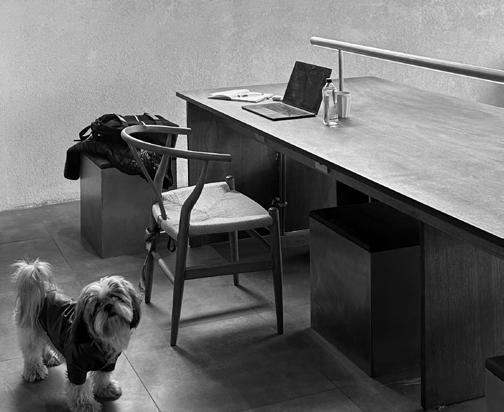

So what’s the revolution?
It’s not about saving the account management department.
It’s about reframing client leadership as a discipline, not a department.
A blend of skills that flexes across fee models, timelines, and team structures. Sometimes high-touch, sometimes lighttouch – always high value.
At AAR, we see this every day:
• In relationship reviews that reveal where leadership is missing.
• In agency assessments where too many people do part of the job, but no one owns the bigger picture.
• In client feedback that says, “I don’t know who to call anymore – they seem more interested in selling than understanding my world.”
Account management isn’t redundant. But it can’t be automatic (or automated). It must be earned, adaptable, and intentionally deployed – for the length of the relationship, not just the start.
Let’s stop asking whether it’s dead.
Let’s focus on how we reimagine it, redesign it – and demand more from it.
Because when it works, it’s the difference between chaos and clarity.
Between output and impact.
Between a delivered project –and a lasting partnership.
This isn’t a eulogy. It’s a rallying cry.
Account leadership still matters. It just needs to evolve as fast as the work it supports.
By Paul Phillips

There’s a popular (at least with a certain demographic) TV programme called Love it or List it, hosted by Kirstie Allsop and Phil Spencer. I’d like to suggest CMOs and their procurement colleagues could learn a thing or two from it.
The premise of the show is that a couple or family are at a crossroads in their opinions about the property in which they live.
Love or leave?
For a relatively small set of common reasons - outgrowing the home, the layout and flow doesn’t work, there’s a change in required usage such as needing to accommodate full-time home working (you get the picture), one of the family members wants to sell and move while the other wants to upgrade/renovate/modernise and stay.
The classic ‘should I stay or should I go’ dilemma. Kirstie acts on behalf of the stayer, designing and inspiring the family home in which they live. It’s going to cost some money (not as much as moving) and there will be disruption as the work takes place, but it will be worth it.

Phil acts on behalf of the leaver, sourcing new properties that fully incorporate the ideal brief, usually sharing properties that the protagonists would have thought were unexpected and out of reach, particularly if some compromises are made regarding the location.
(At this point please don’t get confused with another of Kirstie and Phil’s programmes called Location, Location, Location! Together with Kevin McLeod they have cornered the market in Channel 4 property programming. I digress.)
Having lived in their newly renovated home for a while, the programme ends with the stayer and leaver announcing to Kirstie and Phil if they are going to love it and stay or list it and leave, to the delight and disappointment of K & P depending on the decision.
The CMO stay or go dilemma
Now it occurs to me that CMOs sometimes face a similar decision to make when it comes to their agency partners.
Here are two circumstances that, in my experience, are very common for which I think Kirstie’s approach is more appropriate than Phil’s.

SCENARIO 1: The three-year itch
A CMO and their marketing team have been working with the agency (creative, customer, media, it doesn’t matter) for long enough that some niggles and irritants have developed (a new account lead that’s not as good as the original; ideas that are not as fresh and challenging as those that were part of the reason the agency was selected in the first place; results that are not as impressive as originally achieved; or just that the joy that was first there has all but disappeared).
But the reasons for all of these niggles can rarely be laid exclusively at the agency’s doorstep and the best marketers will accept some responsibility for these situations arising.
Fundamentally the relationship is solid and there’s no thought of putting the account up for review.
But something needs to be done to address the issues.
SCENARIO 2: It’s all going well, however, company policy demands some governance
We all recognise that longer-term relationships between a CMO, their team, and their agency partners results in better work over time that in turn delivers improved marketing and business performance.
Yet the realities of business governance demand that significant (i.e. spending a lot of money) relationships with external companies should be reviewed, primarily to ensure best value is being achieved.
On too many occasions when faced with the same or comparable circumstances, I’ve heard of brands undertaking a competitive pitch which I believe is the wrong mechanic to address the situation. Sometimes the incumbent agency retains the business. Sometimes. But often a new agency is appointed with nothing more than a promise that things will be better with them After all, what more is the appointment of a new agency than buying into a promise?

The mistake in both circumstances is to go to market and run a pitch without exploring other options that are much more fit for purpose to both scenarios identified above. Or in the parlance of Kirstie and Phil, to list the relationship rather than love it.
In the case of the three-year itch, a pitch is not going to address any of the issues identified with the incumbent agency and all other pitching agencies will promise the world, which on occasion some do go on to deliver.
Nor will a pitch address some of the challenges that can be laid at the client’s doorstep.
As for the second scenario where commercial governance is required, the danger for the CMO, their team and the incumbent agency is that another agency wins the pitch for short-term gain. It was very close, but they were just cheaper*.
So, if not a pitch, then what?
I’m glad you asked…
With no apology for the blatant and obvious selling, let me share highlights of the AAR Commercial Audit that we developed specifically for these and other comparable circumstances in which a pitch is the inappropriate tool to use to evaluate an agency.
It’s a diagnostic audit of the commercial, operational and contractual arrangements between a brand and its agency partners.
We evaluate three critical aspects of the relationship:
1. The cost competitiveness of the agency team, remuneration construct and overall commercial arrangements
2. A 180° evaluation of the ways of working between the brand and agency teams
3. An audit of the agency’s production processes and protocols
The benefits of this approach are that commercial governance is undertaken to improve value, drive efficiencies and optimise operational excellence without the
*A reason for losing you will never hear in an AAR-run pitch.
distraction of a competitive pitch and the resulting loss of focus and momentum that this will engender across both the marketing and agency teams.
Next time you are thinking of moving home, channel your inner Kirstie
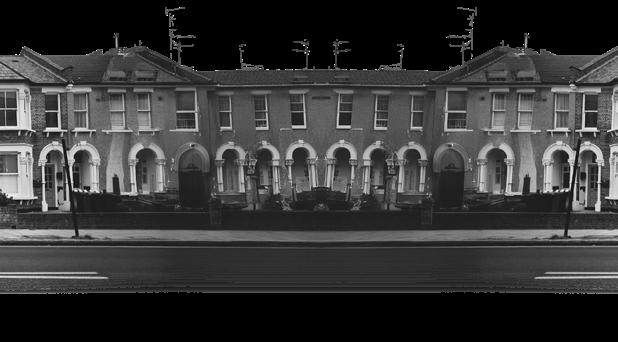
Each element of the audit has teeth in the form of commercial, operational and contractual consequences for all, with changes resulting in positive outcomes, such as:
• A re-framing of the agency team to be more balanced with the right mix of senior, midweight and junior talent to service the scope of work resulting in a reduced Cost/FTE

• A re-worked PRF (performance related fee) element of the remuneration agreement to be more relevant and aligned to the marketing teams’ own targets and performance metrics
• Recommended and adopted tiered fixed price scopes of work to which the brand and agency both agree and so avoid continuously negotiating every project
• Tighter production reconciliation protocols to track and manage campaign overspends vs budget with greater speed clarity
• The adoption of new working procedures that are more efficient than were being employed and so reducing the number of creative rounds of development before sign-off.
How tempting it can be to go to market. Who wouldn’t welcome the super smart perspective on your business being shared by competing agencies.
And there’s a whole army of agency new business folk whose sole function is to persuade you to change agency, and are, in the main, very good at their jobs. I know as I deal with them every day!
But if, at your core, you think you have the right agency and that a little (tough) love and attention will restore the relationship and work to the ambition and expectation of both, spend a little time and money on your current agency partner. You and your agency will be thankful, and the results will definitely be worth it.
By Hannah Astill and Rebecca Nunneley
The ability for media and creative to work together effectively is now critical - the key to both strategic alignment and tactical execution. In AAR’s Evolution of the Marketing Operating Model report, 52% of CMOs predicted that the seamless integration of creative and media would be their biggest challenge in 2025, and this comes as no surprise.
Challenge: Integration matters more than ever
The proliferation of channels and the need to deliver content at scale in multichannel campaigns that move (to paraphrase Margaret Jobling, CMO of NatWest Group) “at the speed of life, rather than our internal processes” has placed huge pressure on CMOs and their teams.
The relentless demand for ‘more, faster, better’ (with platform-specific optimisation that ladders up to that big, brand-defining idea) means that even with great creative and a strong media plan, a lack of integration can hamper campaigns right from the start.
The traditional “transactional” relationship between media and creative agencies, with silos both agency and client side, is no longer fit for purpose. Creative and media must work together to make sure every piece of creative is fit for purpose and will land with the most impact. Where creative and media are aligned from the beginning, brands achieve the right message, right person, right place, right time - and the benefits can be seen in increased marketing, and ultimately business, performance.
With CMOs navigating issues from organisational silos and misaligned teams to difficulties regarding measurement and attribution, our research has revealed that a desire to take content production and/or performance media in-house has become a key motivation behind undertaking an agency model review. Yet with 41% of CMOs planning to re-outsource their IHA, it’s clear that simply leaning on in-housing is not a silver bullet. Marketing leaders still value external perspectives. Agencies - across both creative and mediacan bring a diversity of talent, greater exposure to innovation, and learnings from cross-sector work. They often operate closer to the front lines
of market evolution and technological change. Increasingly, we’re seeing integrated mediacreative briefs as a result, with clients seeking the benefits of cross-disciplinary insight and execution.
Seamless media-creative collaboration requires a shake-up to the traditional model, where media and creative work hand in glove. Integration allows agencies and brands to produce content with the media plan in mind from the outset - making it adaptable, format-ready, and strategically aligned across all touchpoints. Gone are the days where the performance team can dial off when the discussion turns to brand, and vice versa.
For media and creative teams, working closely together is vital for platform adaptability, from taking the big, beautiful creative and breaking it down into something that would go viral on TikTok, to understanding which 5 of 20 creative ideas are really connecting with audiences and pulling that insight through to inform later creative ideas. This is creative that’s data-informed, facilitating a dialturning blend of brand-building with performance outcomes.
There has been movement in the market in response to this need, with creative and media agencies both increasingly hiring personnel from the other discipline, and clients sometimes recognising the integrated offerings of certain agencies to consolidate their agency roster.
But must media and creative be under the same roof to make integration possible? We think not. Clients who have set up brains trusts and planning forums (so that they are in the mix together and genuinely close to the detail) can get media and creative in an “incredible rhythm”. No matter what the model architecture ends up being, the important thing is that the two are working in lockstep.
A key watch out, however, is that change is never done. Speaking at our Evolution of the Marketing Operating Model preview event, Tesco’s Becky Brock discussed the need for marketers to accept that “there's not going to be a place where you've got one beautiful creative and a really stable media deployment or media buying. It's going to be much more dynamic.”
The part where we inevitably discuss GenAI
Generative AI is fast becoming a crucial driver of this evolution. Used effectively, it can support the production of content at scale - particularly for Tier 2 and Tier 3 assets - while also helping to streamline campaign optimisation in real time. When Generative AI is used as a connective thread, it can help to facilitate a feedback loop where creative informs media and vice versa, enhancing overall campaign performance - helping to enable creative thinking and strategic decision making, rather than replacing it.
Opportunity for Agencies: Leveraging the ‘How’ with the ‘What’
As CMOs reconsider their agency models - looking for not just brilliance but repeatable, integrated systems for achieving it - agencies now have an opportunity to demonstrate their value not only in the ‘what’ but the ‘how’. We are moving away from the time when presenting a strong media strategy or standout creative idea is enough. Clients need to understand exactly how it will be delivered and how agencies will bring creative and media closer together.
That means more scrutiny on ways of working, team structure, and operational approach. In the past, the work alone might have won through, but now, agencies that can show a simple and repeatable process of getting to great work and can hold the client's hand through that process, are standing out.
Clients are looking for efficiency that isn’t just about cost-cutting, but bringing about increased operational effectiveness. They want:
• Simpler agency models that provide clearer value.
• Fewer silos and more collaboration, internally and externally.
• A consistent creative thread from brand building to performance marketing.
• Reusable assets that can flow through the funnel, empowered by AI.
• Cross-functional teams that understand both performance metrics and brand equity.
Naturally, brand teams are also responsible for bringing this about. It’s never going to be a case of engaging a creative agency and media agency and saying, “off you go”. The internal marketing team needs to be plugged into the model to drive results, and this isn’t just about right-firsttime work, saving time and money, but creating a virtuous circle of better insight → better content → better media → better business results.
When creative and media work together, supported by smart processes and enabled by AI, campaigns don’t just run, they evolve - fuelled by feedback, insight, and real-time optimisation - to deliver better campaigns and better customer experiences. This is what we are all striving for: a dynamic, responsive marketing model where insight drives action, where creative brilliance meets media precision, and where every touchpoint is informed, intentional, and impactful.

The first half of the year has seen two new members join the AAR team. Please join us in welcoming Paul and Mairead to the AAR family!

We’re delighted to welcome Paul Stevenson to AAR’s consultants’ bench. With over 30 years of marketing experience, including his most recent role as Customer Marketing Director at Virgin Media O2, Paul has led major transformation initiatives, reshaped operating models, and built high-performing teams.
Paul’s expertise spans customer transformation, operating model design, and embedding new technology. He now brings this experience to AAR, supporting brands and agencies navigating change.

Mairead joined AAR as a Business Manager in early 2025, having previously worked as a Project Manager within the market research and insights industry. She brings an analytical mind and an understanding of consumer behaviour to transform insights into impactful business outcomes. Naturally, this led Mairead to transition over to AAR to utilise her extensive project management skills and detail-oriented approach to deliver tailored marketing solutions for clients.
By Kate Donaldson
We’re excited to announce the upcoming launch of the AAR Agency Advice Cohort - an exclusive, invitation-only community for our subscribers. This new initiative is designed to help you navigate the critical challenges facing agencies today.
We are bringing you this new venture in partnership with Changeforce, a leading New York based strategy and growth consultancy. Some of you will already have come across CEO and Co-Founder, George Swisher and Senior Consultant, Joe Snowden who led the AAR New Biz Forum How to Ensure AI Doesn’t Make You Obsolete back in September 2024.
Together we’re launching Slack-based channels where you’ll find real-time insights, expert guidance, and a collaborative peer network. These conversations will be dynamic, practical, and shaped by what you and your colleagues from across the agency landscape want to discuss.
Changeforce is a team of former agency leaders, chief growth officers, and marketing strategists who now consult with agencies at all stages of development, from startup independents to global multinationals. They have lived your challenges and have great experience in how to address them. Combined with AAR market intelligence, the community will offer a rich environment to grow smarter, manage more profitably, and scale more effectively.
The AAR and Changeforce consultancy teams will actively engage in the community - sharing insight, answering questions, and sparking debate. The channels will serve as a secure, member-only space for peer-to-peer support, where agency professionals can share real-world experiences and solutions. A direct messaging feature will also be available to support confidential or sensitive conversations.
As the community grows, we’ll evolve the chat topics based on engagement and feedback - adding new ones as conversations evolve and retiring those that no longer serve your needs.
We’ll be rolling out the Agency Advice Cohort over next three months. Early topics will include client retention and growth, achieving scalable win rates, building a continuous pipeline, establishing sales operations, agency marketplace trends, insight into the marketer’s perspective and a view on what’s coming around the corner from data, tech and AI.
We believe AAR’s Agency Advice Cohort in partnership with Changeforce will be an invaluable resource to your agency growth plans in an increasingly complex marketing landscape. Stay tuned - your invitation is coming soon.
By Hannah Astill
On 18th March, we kicked off our first Integrated Business Development Apprenticeship, bringing media and creative cohorts together for our biggest ever training programme.
We launched this integrated offering to meet the increasing demand from clients for better cross-agency integration, led by Paul Phillips (Partner), Rebecca Nunneley (Lead Creative Consultant) and myself (Lead Media Consultant).
The IPA and IDM accredited course ran in an in-person setting for six weeks, a highly pragmatic course during which we shared our 50 years of learning and many, many lived stories all in service of delivering best practice advice on how to smash a pitch process (or Level Up in new business).
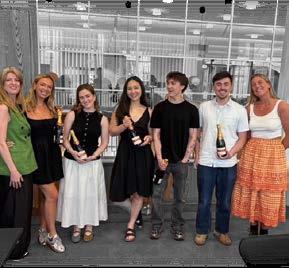
We also invited industry new business and growth titans Lucinda Johnson, Group Director, Marketing and Business Development at OMG and Stephanie Brimacombe, EMEA CEO, VCCP to share their invaluable insights on all things new business and pitching. A real jewel in the crown of the course.
The course included a lot of practical exercises that centred around SEGA, with the wonderful Matt Whittles (Senior Media Planning Manager) and Milly Cutler (Junior Media Planning Manager) joining us from the iconic 80’s gaming brand.
Six teams made up from delegates across media and creative agencies each created their own agency to produce a written response to an RFI and participate in a mock chemistry meeting in which they presented directly to Matt and Milly alongside Rebecca, Paul and myself.
We all agreed it was the highest calibre cohort we’d seen, with so much creativity displayed in the written RFI responses and chemistry meetings. All of the madeup agencies took inspiration from culture to develop their agency proposition and presentations including off licences, gaming puns aplenty, and the AAR team were even anthropomorphised into gaming avengers in a magazine takeaway. Beware Paul Phillips’ anecdote attack!
Of the winning team, Matt commented that he ‘forgot they weren’t a real agency’.
A big thank you from us to all those that attended and participated with great enthusiasm.
From the feedback received 100% described the course as insightful, informative or engaging with 80% saying it was enjoyable and fun.
Though perhaps most importantly, 80% agreed that they’d already implemented learnings in the workplace before the course had even finished.
If you want to supercharge your new business talent helping them to become a new business ninja, then make sure you sign them up for our next course (coming Spring 2026.

“The AAR Integrated Business Development Apprenticeship was a genuinely unique experience. It brought together a diverse group of people from various agencies and backgrounds, creating a dynamic environment where we could collaborate and build something both distinctive and truthful.
“Coming into the course with little prior experience, I was surprised to uncover hidden strengthsunexpected "Easter eggs" within my own skill set - that I could contribute to the process.
“The feedback throughout was insightful and enriching, and although the final pitch was simulated, the experience felt real and impactful. It challenged and shaped me in ways that will stick far beyond the programme.”
IZABELLA GYARMATI, STUDIO COORDINATOR, UNCOMMON CREATIVE STUDIO


By Tony Spong

Each year when planning our seminar programme, we’re always looking to mix topics relevant to core skills whilst jumping on emerging hot topics. Blending new speakers and content with proven favourites.
Post-COVID we have been running our seminars over Zoom, which has allowed us to cater for larger numbers of agency participants, enabling greater discussion and adoption of ideas once back at the ‘ranch’.
However, when planning the content for this year, two topics pretty much ‘demanded’ that they be in person. ‘The Art of Networking’ and ‘Feedback Alchemy’, which also gave us the opportunity to see how you might respond to an in-person format.
And the good news is that the feedback has been amazing and as one delegate said, ‘this session HAS to be in person’ so, it’s encouraging to know we have got the topic and format combo spot on.
Going forward, we can now explore and create a wider range of seminars by utilising the strengths of each format.
We’ll take a short break over July and August and come back online in September with ‘Presentation in hybrid times’, for which the demand is consistently high.
This is followed in October by one of those hot topics that is rapidly climbing up the ‘charts’ in our discussions with clients. As they continue to review and restructure their marketing operating models, they are keen to explore new ‘Ways of Working’ which we believe represents a huge opportunity for agencies to engage with clients at such a crucial time.
Our final seminar of the year is all about how we can use the art of storytelling to engage and influence decision makers via well thought-through narrative arcs. No slides and lots of interactions in this one.
Thanks again for your ideas on new topics – keep them coming - and all the feedback, which most pleasingly show the seminars scoring consistently above 4.5 out of a possible 5 against all metrics, helping us to maintain the standards you expect from us.

By Tony Spong
Since the pandemic, we have been acutely aware how hard it has been for agency leaders to find the time to think, never mind do that with your peers. So, we were determined to create a new type of event for 2025 that would help create the space and time to do just that.
Inspired by an invitation I had to a Walking Partnerships Day on the South Downs near Lewes, I came away feeling the format of walking side by side was a powerful way to experience being in nature to deepen connection and conversation, create relationships, and facilitate collaboration.
The format not only gave me and others the space and the time to think but also generated a different type of energy than if we were in a ‘meeting room’.
My thanks to Anni Townend, Collaboration EquationTM, James Renwick PCC Recast Coaching, and my colleague Vicky Gillan for helping to connect a number of incomplete hunches and ideas over the past 18 months that resulted in the launch on 14 May of what we hope will be the first of a series of ‘Walk the Talk’ events.
We’ve been greatly encouraged by the response to the format, which everyone felt fully met the objectives of creating time to think, both individually and as a group. So much so that some have already identified areas where this format would work well for their agency.
So, what did we talk about on our walk? The topic we chose to start our Walk the Talk Agency Leaders events was collaboration.

Beautiful place and space for reflection with a great group and facilitators.”
Chance to spend proper time with peers and to have proper headspace to genuinely share openly
Because it’s used everywhere - internally, externally, in pitches, in reviews, as an ambition, a solution, a holy grail, a one-size-fits-all with no detail or explanation of what, how, when or why. Collaboration has become no more than a buzzword. Overused, misunderstood and at worst – at least in clients’ eyes – it just means loads more (expensive) meetings and very little action. Take a look at these stats from AAR research and agency assessment programmes:
• 100% of agencies in pitches talk about being collaborative yet none explain in a way that differentiates
• 90% of client: agency assessments ask for more collaboration yet, when probed, often really mean earlier co-operation or coordination
• 80% of clients believe that increased collaboration will naturally mean more people being involved resulting in slower delivery and more cost
So, that became the core focus of the day; to help agency leaders ‘Find your Collaborative EdgeTM’ by exploring and sharing what collaboration meant to them - unpacking the key ingredients and crucially the environment that enables success at an individual, team, and agency-wide level.
We shared our hypothesis that there’s a growing disconnect between the broader structural and organisational changes taking place across modern marketing operating models and the ways of working that can unleash the potential of these new structures. As clients increasingly operate in an “always-on” environment, we are going to need a much more flexible ‘play book’ of options and develop the ability to move seamlessly between each.
Vicky Gillan then outlined a simple model that she summarised in her article Spoiler Alert: Not Everything NEEDS collaboration! to start the discussion.
We discovered how much of the good collaboration we are doing is actually very reactive, driven by short term agendas such as an unforeseen problem or a pitch. With time to think on our walk we were able to see that we have squeezed the space and time for slow hunches to develop into great ideas.
The leaders went away ready to reassess what collaboration meant to them and explore how they will not only lead by example in setting aside time to think for themselves, but create the environment that will promote curiosity, allow those quieter voices to be heard and do so with the care that brings a greater level of psychological safety for all those involved.
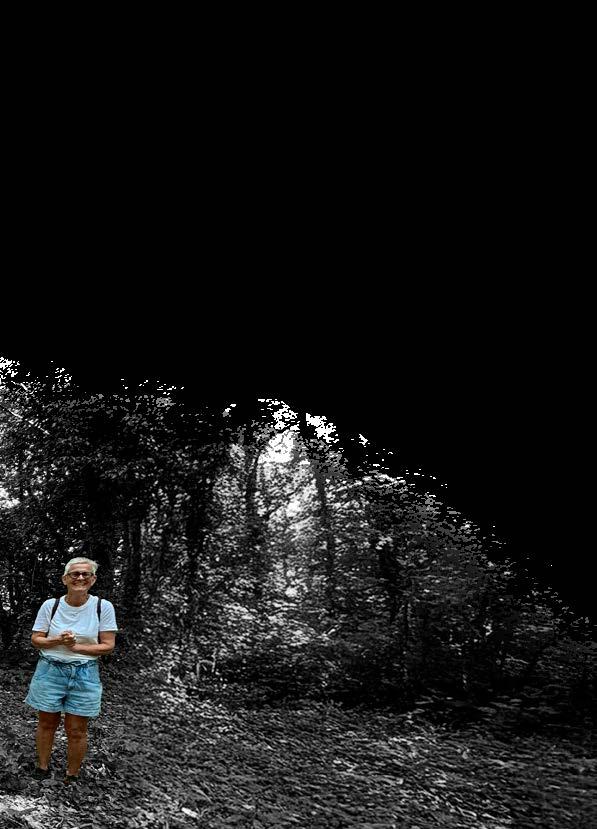
We’d love you to join in the collaboration debate, so, again, please get in touch.
Perhaps start with the Collaboration Paradox, explained in my article here.
Then watch the Finding Your Collaborative EdgeTM Podcast – featuring Anni, Lucy, James and myself.

Andrew Bloch Lead Consultant, PR, Social, Content and Influencer abloch@aargroup.co.uk

Emma Regan Business Manager eregan@aargroup.co.uk

Katrina Law Marketing Lead klaw@aargroup.co.uk

Cristiana Spataru Senior Consultant cspataru@aargroup.co.uk

Emily Peacock Business Manager epeacock@aargroup.co.uk

Hannah Astill Lead Consultant, Media hastill@aargroup.co.uk

Kate Donaldson Head of Business Management kdonaldson@aargroup.co.uk

Kirsty Boyd Business Manager kboyd@aargroup.co.uk

Mairead Cashin Business Manager mcashin@aargroup.co.uk

Maria Farrell Chief Operating Officer mfarrell@aargroup.co.uk

Rebecca Nunneley Lead Consultant, Creative rnunneley@aargroup.co.uk

Paul Phillips Partner pphillips@aargroup.co.uk

Paul Stevenson Lead Consultant CRM/CX pstevenson@aargroup.co.uk

Robin Charney Partner rcharney@aargroup.co.uk

Vicky Gillan Lead Consultant, Upskill vgillan@aargroup.co.uk

Victoria Fox Chief Executive Officer vfox@aargroup.co.uk

Tony Spong Lead Consultant, Brand Strategy tspong@aargroup.co.uk

Vonnie Alexander Lead Consultant, CRM/CX valexander@aargroup.co.uk
